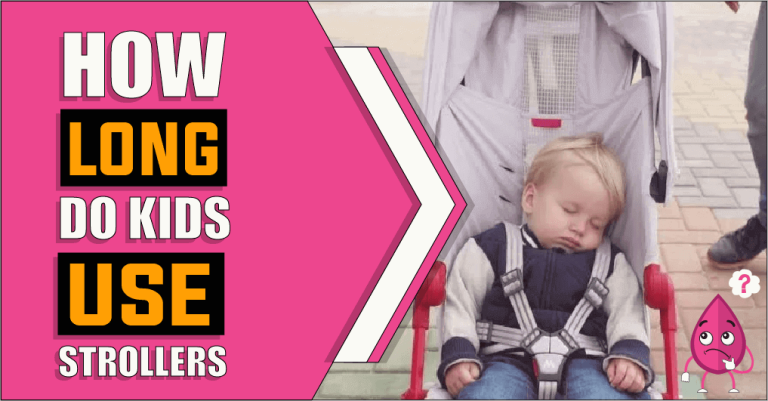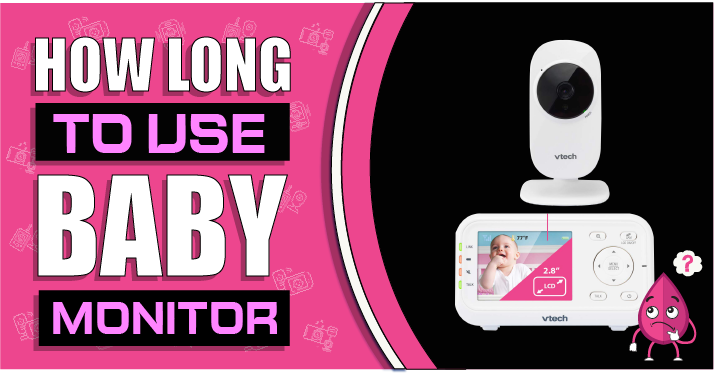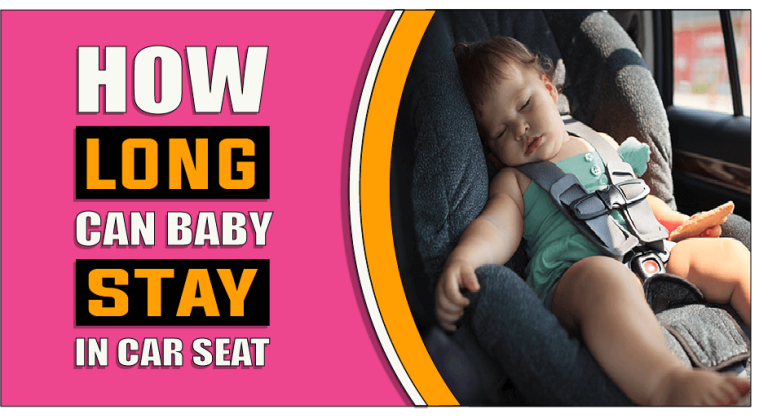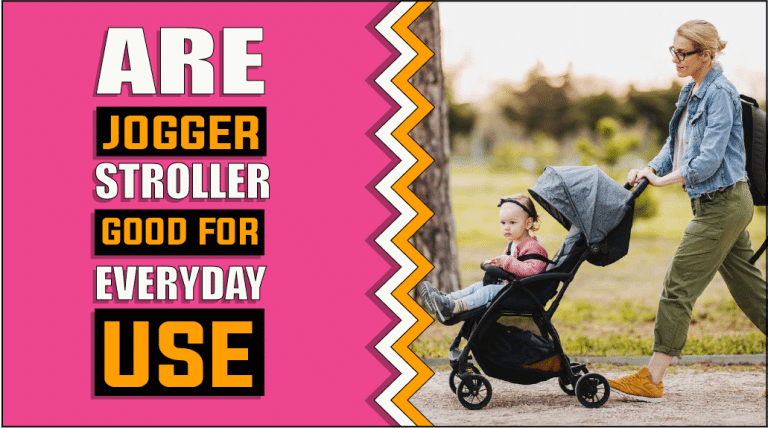When To Change Baby Car Seat – The Truth Reveals
Are you a new or expecting parent wondering when you should change your baby’s car seat? Car seat safety is essential to parenting, and choosing the right time to switch to a different car seat can be confusing. To ensure that your little one rides safely at every stage, parents must know when and how to correctly transition their child’s car seats. To help clear up some of the confusion surrounding this issue, we’ve put together this post detailing all you need to know about “when to change baby car seat.” We also discuss some tips for properly installing your new car seat and what safety factors to consider when choosing the right seat. So, let’s get started!
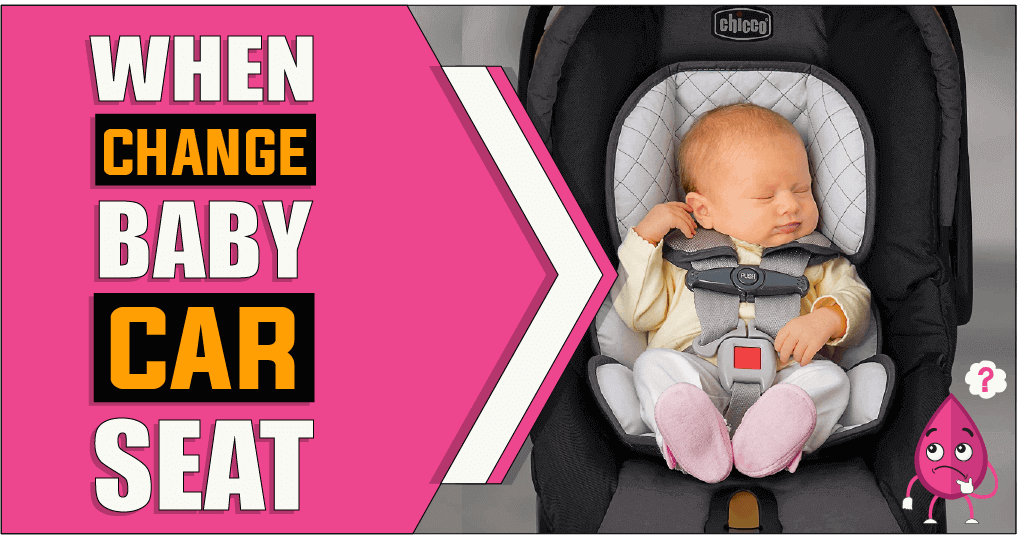
Let’s explore when to change baby car seat
Car seat safety is paramount when keeping your baby safe and secure on the road. Knowing when to change a baby’s car seat can confuse parents, but following some simple guidelines will ensure your baby is always in the safest seat possible. The most important thing to remember when changing a baby’s car seat is to provide the new seat meets all applicable safety standards and correctly fits your vehicle. Generally speaking, you should use a rear-facing car seat until your child reaches 12 months and weighs at least 20 pounds. You can then transition your child to a larger rear-facing car seat – typically one with a higher weight limit (up to 35 pounds). Once your baby has outgrown the rear-facing car seat, it’s time to switch them over to a forward-facing option. There are a few essential considerations to keep in mind when making the switch:
1: Check the height and weight limits on the forward-facing seat. Most forward-facing car seats have a 40-pound maximum weight limit, varying depending on the model. It’s also essential to ensure your child is tall enough to sit safely in the seat, as some models may have a minimum height requirement.
2: Make sure the harness fits properly. The harness should be snug against your child’s body and lie flat across their chest – not up around their neck or chin. When it comes to keeping your baby safe on the road, the proper fit of the harness is essential.
3: Confirm that the seat is securely installed in your vehicle. Follow the car seat manufacturer’s instructions for Installation, and check to make sure that the car seat moves less than one inch side-to-side or front-to-back when it’s properly secured. If your vehicle has been in an accident, even a minor one, it’s essential to replace the car seat regardless of age or condition.
4: Upgrade your car seat as your child grows. Once they reach the current seat’s upper weight or height limits, it’s time to replace it with an option that will provide them with a secure fit for their size and weight. Booster seats are typically used when children reach 40 pounds or four years of age – but check the specific height and weight requirements of the seat you’re considering before purchasing.
Regarding car seat safety, following these guidelines can help ensure your child is always in the safest seat for their age, height, and weight. Always check with your local car seat technician for more detailed information about when to change a baby’s car seat.
What are the signs that you need a new car seat?
Regarding car seat safety, ensuring your child is always properly secured is essential. If you’re wondering if it’s time for a new car seat, there are several signs to look for.
Car seats are designed to keep your child safe and secure, but the materials can break down over time. If the car seat has been used for more than five years or has gone through significant wear and tear, such as being involved in an accident, then it’s best to replace it.
2: Expiration date –
Most car seats have an expiration date printed on the underside of the seat. If your child has outgrown their current car seat, check for an expiration date before purchasing a new one.
3: Damaged or broken parts –
Inspect the car seat for any cracks or other damage that could compromise its safety. If there are any broken or missing parts, it’s essential to replace the car seat immediately.
4: Uncomfortable fit –
If your child seems uncomfortable in their car seat, it may be time for a new one. Ensure the straps are correctly adjusted and check for any signs of wear and tear.
5: Outgrown size –
As your child grows, their car seat may no longer fit properly. The harness straps should be at or below the shoulders for rear-facing seats and at or above the shoulders for forward-facing seats. If the straps no longer fit properly, it’s time to invest in a new car seat.
By being aware of the signs that you need a new car seat, you can ensure your child is always safe and secure in the car. Inspecting your current car seat for any potential issues regularly is essential, and never use an expired or damaged seat. With proper care and maintenance, you can rest assured your child is safe and secure in their car seat.
How do you go about choosing a new baby car seat
Choosing a new baby car seat is essential to ensure your child’s safety. Here are some helpful tips to consider when selecting a new car seat:
1. Research your Options –
Before you begin shopping, take the time to research the different types of car seats and features available to determine which one best suits your needs and budget. Consider factors such as the size of your vehicle, the height and weight of your child, any special safety features you would like to have, and other individual preferences before making a purchase decision.
2. Safety Tested –
Ensure that any car seat you select is up-to-date on all safety testing. Look for approval from the National Highway Traffic Safety Administration (NHTSA). Additionally, be sure to check the expiration date on the car seat and replace it after that date if necessary.
3. Ease of Use –
When selecting your car seat, consider how easy it is to install and use. Look for models that are quick to install and adjust according to your child’s size. Additionally, some car seats have helpful features such as cup holders or adjustable straps, making it easier for parents and caregivers to use the car seat.
4. Comfort –
Ensure that the car seat is comfortable for your child by testing it before buying. Your child sits in the car seat for a few minutes to ensure it correctly fits their body shape. Additionally, look for models with additional padding or adjustable headrests to support your child during long car rides.
5. Cost –
Finally, consider the cost of the car seat when making your purchase. Most car seat models are available at various prices, so take the time to compare different brands and features to determine which car seat offers the best value for your money.
Considering all these factors, you can make an informed decision when selecting a new baby car seat. With the proper research and preparation, you can ensure your child will be safe and comfortable in your chosen car seat.
Installation tips for new baby car seats?
Once you have selected the perfect car seat for your child, it is vital to ensure it is installed correctly. Here are some tips to keep in mind when installing a new baby car seat:
1. Read the Manual –
Before beginning Installation, read both the vehicle and car seat manuals thoroughly. It will ensure familiarity with the car seat’s specific installation process and safety features.
2: Follow Vehicle Manufacturer Instructions –
Most vehicles have specific instructions for installing a car seat. Ensure to follow the manufacturer’s guidelines regarding tether anchors and lower anchor locations, as these are essential for proper Installation.
3: Use Approved Accessories –
Use approved accessories such as base extensions or locking clips to ensure a secure fit. This will also help to ensure that the car seat is installed correctly and provide additional support for your child in case of an accident.
4: Install the Car Seat at the Correct Angle –
Depending on the size and age of your child, you may need to adjust the angle of the car seat to keep your child’s head from falling forward while they are sleeping in the car. Check the manufacturer’s instructions regarding the correct angle for your particular car seat model.
5: Check Installation –
Once you have finished installing the car seat, take a few minutes to double-check that all connections are secure and that the seat is correctly positioned in the vehicle. Additionally, you can use a car seat safety checker or ask a certified technician to inspect your Installation.
By following these simple tips and ensuring that your car seat is installed correctly, you can ensure your child will be safe and secure when riding in the car. With the proper preparation, you can ensure that every car ride with your little one is a safe and enjoyable experience.
Baby Car seat safety tips for parents?
Baby car seat safety is of utmost importance for parents who are traveling with their little ones. Simple guidelines can ensure the baby is safe and secure in the car.
1: Choose the Right Type of Car Seat –
There are several types of infant car seats on the market, so it is vital to make sure you purchase the one that best fits your baby’s age, weight, and size.
2: Install the Car Seat Properly –
Before you take your baby out for a drive, ensure you have installed the car seat correctly. It is essential to read the instructions carefully; having someone else check your work can also be helpful.
3: Ensure that Your Baby is Securely Strapped in –
Once you have installed the car seat correctly, ensure you properly secure your baby into the harness before each ride. Ensure the straps are securely fastened around your baby’s waist and chest.
4: Choose the Right Position for Your Baby –
It is recommended to place your baby rear-facing until they are at least two years old, as this provides more support for the neck and spine in case of an accident.
5: Never Leave Your Baby Unattended –
Never leave your baby unattended in the car, even for a few minutes. If you have to make a stop, make sure that someone is always with your child.
6: Don’t Ignore Regular Car Seat Checks –
Finally, it is essential to routinely check your car seat for any signs of wear and tear, as this can affect its safety. Be sure to follow the manufacturer’s guidelines for regular maintenance and inspection.
Following these tips can help ensure your baby’s safety when traveling in a car. By taking the time to properly install, secure, and maintain your infant car seat, you can feel confident knowing that your little one is as safe and secure as possible.
Conclusion Paragraph
In conclusion, it’s important to remember that safety should be your primary concern when considering changing a baby car seat. Knowing “when to change baby car seat” and how to choose the right one is essential for keeping them safe on the roads. Along with these basics, installation tips are vital to ensure you use the car seat correctly and by all local regulations. Ultimately, following these steps will help ensure maximum security and peace of mind for your child and all other drivers and passengers on the road. When it’s time to change your baby’s car seat, research and take appropriate measures to ensure the best car for your little one!

